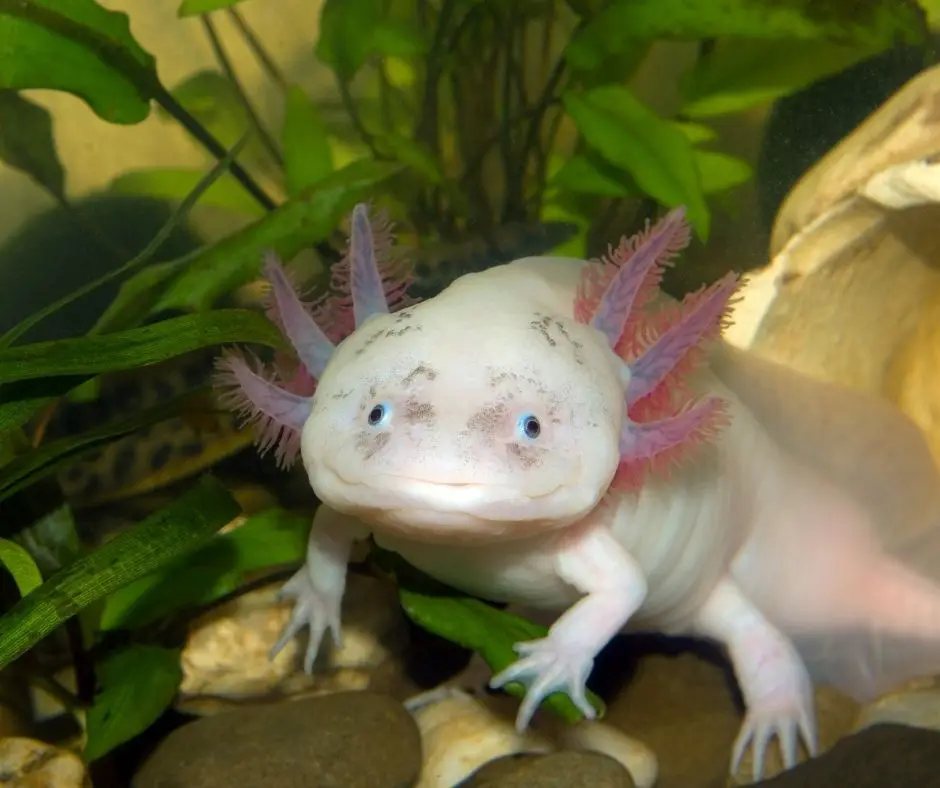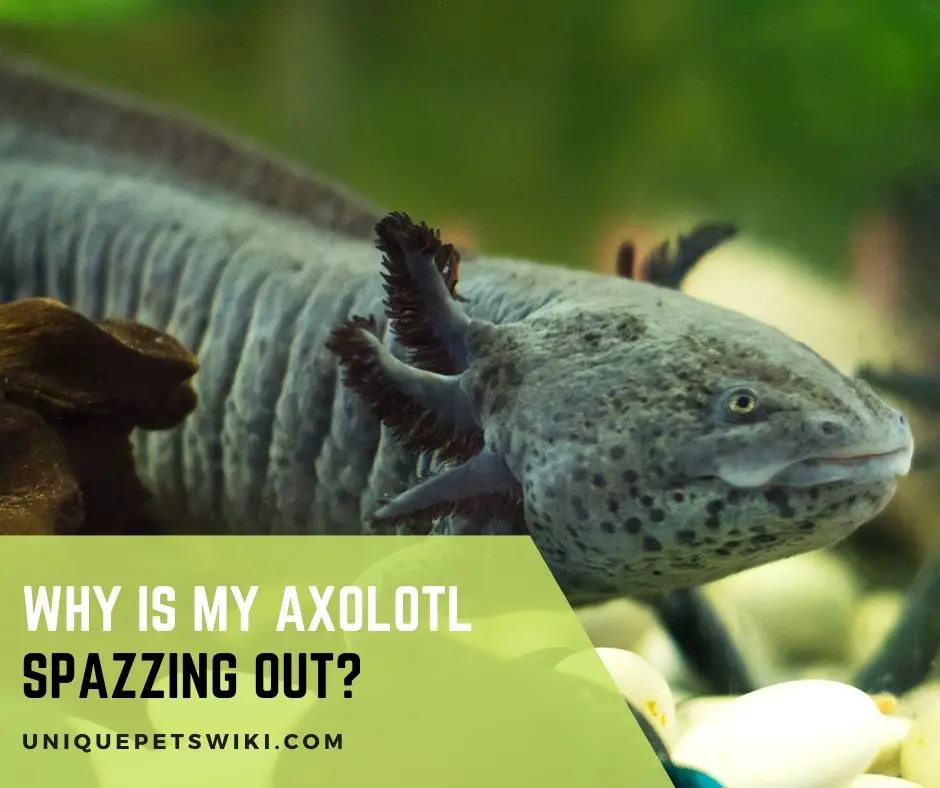Your axolotl is moving in an awkward and clumsy way. Is this behavior normal? It’s important to be careful when your axolotl starts spazzing out, because in most cases it may be the sign that the animal is very sick.
Many axolotl owners get worried when their little friends behave in this way. By learning about the underlying cause of this condition, you can address it appropriately.
In this post, we are going to discuss everything you need to know about this weird behavior of your water monster.
Hopefully here you will find answers to all your nagging questions regarding this issue.
Contents
Why Is My Axolotl Spazzing Out?

If an axolotl is spazzing out, the behavior is not normal. The problem usually occurs once you have changed the tank water. Your axolotl is probably finding it hard to adapt to the new water.
An axolotl that is too stressed, for whatever reason, may move in an awkward way. High levels of ammonia in the tank water can also be responsible for this issue.
There Is Something in the Water That the Axolotl Doesn’t Like
If you have recently changed something in the tank, your axolotl is likely to perceive the change as a threat to its normal way of life.
Notice if you have added something to the tank. Any sudden change can stress the animal out.
The addition or removal of crops, plants orthe substratemay cause the axolotl to behave in a clumsy, awkward or abnormal way.
If you have put the axolotl in a new tank, consider transferring the animal to its old home. Consider temporarily moving it to a container or tub. Or decorate the tank as before.
Then see the reaction of your little friend. If it still seems to be spazzing out, the issue is probably in the water quality. Use a test kit to check the water parameters. If there is an issue, address it immediately.
API FRESHWATER MASTER TEST KIT 800-Test
- Contains one (1) API FRESHWATER MASTER TEST KIT 800-Test Freshwater Aquarium Water Master Test Kit, including 7 bottles of testing solutions, 1 color card and 4 glass tubes with cap
- Helps monitor water quality and prevent invisible water problems that can be harmful to fish and cause fish loss
- Accurately monitors 5 most vital water parameters levels in freshwater aquariums: pH, high range pH, ammonia, nitrite, nitrate
- Designed for use in freshwater aquariums only
- Use for weekly monitoring and when water or fish problems appear
Last update on 2022-12-30 / Affiliate links / Images from Amazon Product Advertising API
High Chlorine Level In the Tank
High concentrations of chlorine in the tank can be fatal for your axolotl. Even small amounts can irritate the animal’s gills or skin.
Have you recently dechlorinated the water? If not, hurry up! It is to be noted here that chloramines do not evaporate. Use your dechlorinator regularly.
Bad Water Conditions
Spikes of ammonia and nitrate in the tank water can cause severe stress to axolotls. Check the water parameters with a test kit.
Also, check the temperature of the water. See if something has gone wrong with pH, GH or KH. If there is an issue, make necessary adjustments.
What to Do When Your Axolotl Spazz Out?
When your axolotl is spazzing out, the first thing you have to do is to check the water quality.
Look for the signs of stress, such as loss of appetite, gill deterioration, gills curled forward, floating, frequent intake of surface air, lack of responsiveness, and frantic swimming.
If there’s an issue with water quality, address the issue as quickly as possible. Keep everything cool and optimal, and turn off the lights.
Pay particular attention to the temperature of the water.
Conclusion
A normal axolotl is not likely to spazz out. Therefore, if your axolotl is moving in a clumsy or awkward way, try to figure out the underlying cause and address it immediately. In most cases, the problem is with the tank water.
Check the water temperature and parameters and adjust them appropriately. Hopefully, your little friend will start moving in a normal way. If the problem persists, contact a veterinarian.

